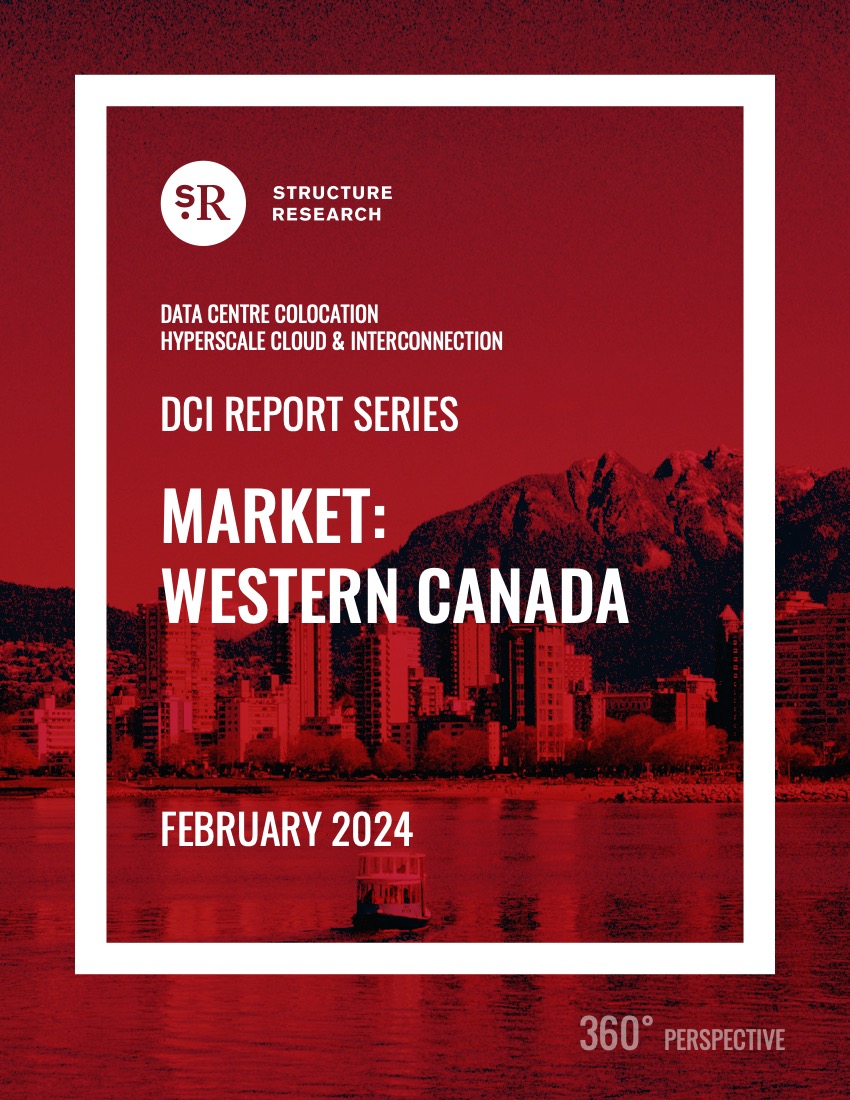Description
Western Canada DCI Report 2023 Update: Data Centre Colocation, Hyperscale Cloud & Interconnection
The data centre colocation market in Canada has been centred around the two major markets in the provinces of Ontario (Toronto) and Québec (Montréal). Western Canada has developed at a much slower pace in comparison given the smaller size of the region and the geographical distance. Vancouver, British Columbia and Calgary, Alberta are the two major metros in Western Canada and while there are a few other markets – Kamloops, Kelowna (BC) and Edmonton (AB) – that have third party data centres, they are not moving the needle.
The Western Canada data centre market is expected to generate $165.7m overall in 2024 and is projected to grow at a five-year CAGR of 10.1% (all figures USD). This is a market that is still in a pre-hyperscale stage of development and the supply, demand, and overall growth metrics through 2022-23 reflect the current composition of the market, which is almost entirely driven by retail colocation. This is expected to change very dramatically in 2023-24 when AWS comes online in Calgary. AWS will consume a significant amount of hyperscale colocation to house its three availability zones and it is no coincidence that the numbers will also spike in that time frame.
While hyperscale is just getting started in Western Canada, the networks and on-ramp nodes that connect to clouds are expanding and building for the future capacity requirements that are coming. This accelerated during the peak of the pandemic as hyperscale clouds had to increase on-ramp capacity to connect users to clouds that were sitting in Ontario and Québec. Traffic was also coming in and out to APAC through Vancouver, which further stressed network capacity. All of this activity is driving demand for colocation, particularly in data centres that are network-dense and have interconnection capabilities. Hyperscalers are focused on the network right now and this is expected to be just a prelude to the coming hyperscale growth stage.
One of the most challenging aspects of serving Western Canada is the fact that Vancouver and Calgary are probably not yet large enough to each justify localized cloud regions. So hyperscalers are left to decide which location – Vancouver or Calgary – to serve both from. AWS has chosen the latter and is likely to use its edge product Local Zones to serve Vancouver. Google and Microsoft are sure to encounter the same issue. Should they house the core region in Vancouver or Calgary and how should they serve the market that does not get a localized region? AWS has provided the blueprint and there are clear signs that Google and Microsoft are building similar types of edge nodes in order to have local compute capacity that is required by the growing number of performance-sensitive applications. This may be a stopgap of sorts to start, but will translate into full core regions over time, and is a strong indicator for the growth prospects and future upside of the market.
Our report on Western Canada does not account for Google and Microsoft’s plans from a cloud region or AZ perspective. But it does account for what they are planning from an edge perspective. Edge nodes up to and around the 1MW range are set to arrive and will fuel demand in a market that has inventory, but is constrained by the lack of capacity in network-dense facilities. The problem is particularly acute in Vancouver where real estate is both limited and expensive and existing operating footprints are still making the transition to a hyperscale world. Given the challenges, it is no surprise that existing and prospective market entrants are actively trying to address the problem.
This report is an excellent resource for any service provider, investor or enterprise end user looking to understand and project the data centre market in Western Canada or find a service provider.
Read the 55-page PDF executive summary






